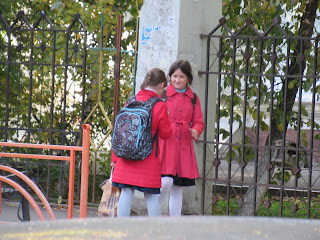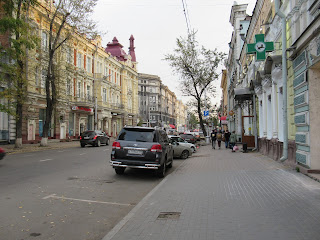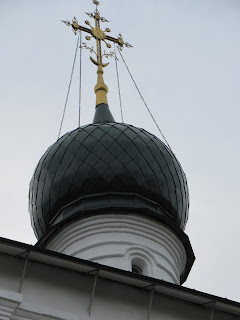Part of the impetus for completing the Trans-Siberian Railway as fast as humanly possible was to be able to get troops and supplies to the east, both during the civil war between the Whites and the Reds, and to defend against Japanese aggression. In the years leading up to, and during the war, Japan saw itself as the superior nation with a significant plan of expansion by force. Before the railroad, it would take months to get soldiers from Moscow/St. Petersburg to the Pacific. Yesterday as we rode the bus back in to the city from the lake, Helen pointed out some buildings that she said were built with labor from Japanese POW's at the end of WWII, which is what started me down this rabbit hole.
Probably everyone knows stories of exile to Siberia- some as prisoners whose lives were gruesome in the extreme, and some who were able to bring their families and re-settle themselves. Before the Russians used exiles to populate this vast land, there were Buryats, Kalikans (precursors to the Turkic speaking Yakuts), Oirats, Khalkha, and Tungus. And before the Russians, there was Genghis Khan, who took this land along with most of Asia and some of Europe by force.
By now you are asking, what is the point of all these unrelated comments? No point, exactly, but a thought anyway. For me it raises again the question of who has the right to a plot of land, and on what basis are those rights established?
First in time seems the most equitable approach, except that in almost all cases except perhaps Iceland, those we now consider indigenous to an area were at one time the interloper, and probably took the land by force in many cases. So who really has that claim?
I'm not suggesting that means first in time won't work. I'm just noting the obvious point that all bases for establishing right to ownership or control of land are human constructs, subject to continuing agreement by all parties. Where consensus fails, war or conflict is the likely result throughout human history.
The first settlers to what is now the US faced the same dilemma- they needed to have a means to establish clear title to land, and they had the pesky little problem of those who were here before them. They reached back to around the 1400's for a legal theory that would justify their taking the land.
(the Pope had issued a papal bull for the benefit of the Portuguese who wanted to colonize parts of the African continent - and thus gave birth to the discovery doctrine, which might also be called "I saw it first so it's mine." The Christian God gave these 'Christians' a divine right over all except any prior arrivals from a 'civilized' (aka Christian) nation, according to the Pope- not the first or last time religion has served for political purposes.)
As humans seem to have done since recorded history, those who want land (or oil, or other resources) for themselves continue to find ways to justify taking it. All this results for me in the idea that we can't stop ourselves from being human. We can strive to let our better selves govern, but that is all it is, an effort. Sometimes it will succeed, and sometimes it will fail. And they say travel is broadening!












































































